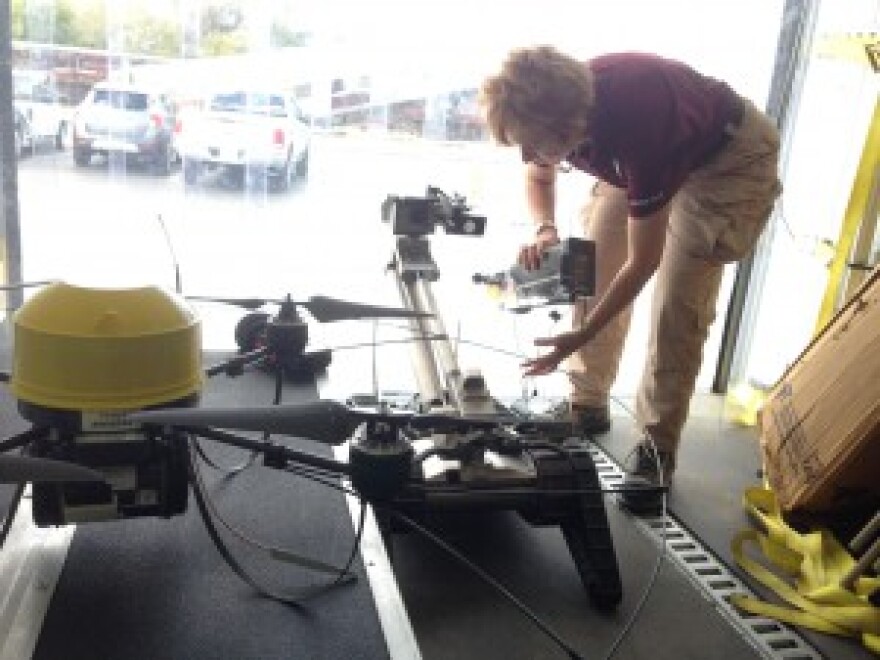Researchers hope to slow down Ebola even more … using robots.
A crucial reason Ebola hasn’t taken off more widely in the United States and elsewhere is that it’s spread only by direct human-to-human contact involving bodily fluids. What if technology could create distance between the virus and the health care worker – remove the human touch?
On Nov. 7th, the White House Office of Science and Technology Policy is holding a series of conferences with roboticists and doctors to brainstorm ideas for the use of robots in the fight against Ebola. One of the sessions at Texas A&M University in College Station.
Disaster Drones, Ebola Fighters?
Robin Murphy is the godmother of emergency robotics. She runs the Center for Robot-Assisted Search and Rescue at Texas A&M University.
Murphy has been to more than a dozen disaster sites – from Hurricane Katrina to Japan’s Fukushima Daiichi nuclear power station. And where she can’t set foot – because of radiation or mudslides – she sends in robots.
“We’ve really looked at the more classic search and rescue [so far]” she says.
The Ebola epidemic is very different. But, the potential for disaster robotics is great. Murphy says robots could be used as supervisors, to handle waste, even to help carry bodies.
That’s right, the idea of a “mortuary robot” is gaining momentum.
Mortuary Robots
When people die of Ebola, they are highly infectious, and it takes several people to carry a body. Existing robots could do that work, Murphy says, but we have to design them differently than we do for other natural disasters.
This isn’t moving radioactive material, it’s carrying a loved one.
So what might a mortuary robot look like?
Think of a small tractor, Murphy says.

“But now, instead of having a scoop [using] something more like a coffin or sarcophagus.”
Architects at Texas A&M are looking at ways to make it look nicer, more friendly. Engineers are hoping to make it easy enough for anyone to operate.
Robots, And The Human Touch
In hospitals, robots could be used to detect contamination, to monitor health care workers changing clothes, or disinfect equipment.
“The opportunities are almost endless, but technology is still limited and they are still expensive,” says Dr. Bertalan Mesko. Mesko is author of “The Guide to the Future of Medicine.”
He’s hopeful about an Austin Texas-designed robot being used in hundreds of hospitals across the country. It’s called “Little Mo.”
“It goes into a room and by using pulses it can disinfect all the surfaces in one room in just a few minutes time,” Mesko says. ”
Such a robot could be used to disinfect tents or whole hospital rooms, but it takes time and effort to get them to the locations.”
 The Xenex ultraviolet machine known as “Little Mo.”
The Xenex ultraviolet machine known as “Little Mo.”
Credit BJ Austin / KERA News
Of course robots alone won’t be enough to stop Ebola. They’ll have to collaborate with health care workers.
And, Mesko says, this will be an experiment:
“There isn’t enough evidence behind using robots in stopping such disease outbreaks, but this could be used as a study to measure the real effectiveness and success for future cases.”
The search is on to find a way to put robots to work, without losing the human touch.





